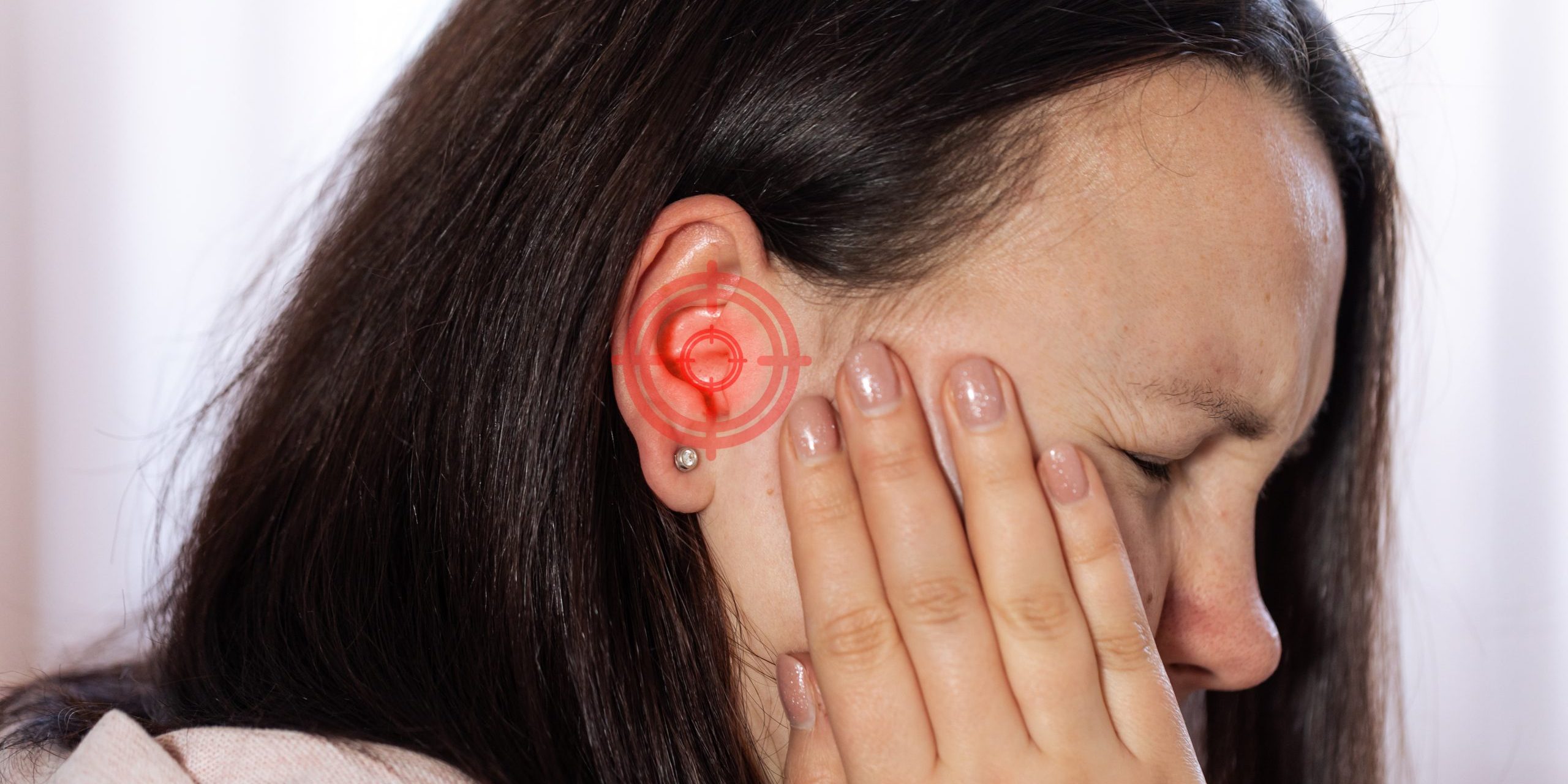What are the symptoms of swimmer’s ear?
Swimmer’s ear, or otitis externa, is an infection or inflammation of the outer ear canal. Symptoms of swimmer’s ear can include:
- Itching: Persistent itching in the ear canal is often one of the first symptoms.
- Redness and Swelling: The ear canal may appear red and swollen due to inflammation.
- Ear Pain: Discomfort or pain in the ear, which can be mild to severe, is common. The pain may worsen when touching or pulling on the ear.
- Discharge: There may be a clear, yellow, or pus-like discharge from the ear. The discharge can sometimes have an unpleasant odor.
- Fluid Sensation: A feeling of fullness or fluid in the ear can occur.
- Hearing Loss: Temporary hearing loss or a sensation of blocked hearing can result from swelling and discharge obstructing the ear canal.
- Fever: In more severe cases, a mild fever might be present.
Swimmer’s ear often occurs after water exposure, such as swimming or bathing, which can leave the ear canal damp and create an environment conducive to infection.
What are the causes of swimmer’s ear?
Swimmer’s ear, or otitis externa, is caused by an infection or inflammation of the outer ear canal, and it often results from:
- Water Exposure: Prolonged exposure to water, especially in swimming pools, lakes, or oceans, can leave the ear canal moist and create a breeding ground for bacteria or fungi.
- Trauma to the Ear Canal: Inserting objects like cotton swabs, fingernails, or earplugs into the ear canal can cause minor abrasions or irritation, which can lead to infection.
- Excessive Earwax: While earwax (cerumen) usually protects the ear canal, excessive earwax can trap moisture and create an environment that promotes infection.
- Infection: Bacterial or fungal infections are common causes of swimmer’s ear. Pseudomonas aeruginosa and Staphylococcus aureus are common bacteria involved, while fungi like Aspergillus can also be a factor.
- Skin Conditions: Conditions such as eczema or psoriasis can affect the ear canal and make it more susceptible to infection.
- Allergies: Allergic reactions to ear drops, earrings, or other substances can contribute to inflammation and infection in the ear canal.
- Improper Ear Care: Using inappropriate ear cleaning methods or products can damage the delicate skin of the ear canal and increase the risk of infection.
What is the treatment for swimmer’s ear?
Treatment for swimmer’s ear, or otitis externa, focuses on relieving symptoms, clearing the infection, and preventing future occurrences. Common treatment options include:
- Ear Drops: Prescription ear drops containing antibiotics or antifungals, often combined with steroids, are commonly used to treat bacterial or fungal infections and reduce inflammation.
- Cleaning the Ear Canal: A healthcare provider may carefully clean the ear canal to remove excess discharge and debris. This helps in the effective application of medication and alleviates symptoms.
- Pain Relief: Over-the-counter pain relievers such as acetaminophen (Tylenol) or ibuprofen (Advil, Motrin) can help manage discomfort and reduce inflammation.
- Avoiding Water Exposure: Keeping the ear dry during the treatment period is important. Avoid swimming, submerging the ear in water, or getting the ear wet while showering or washing.
- Warm Compresses: Applying warm, moist compresses to the outer ear can help soothe pain and reduce swelling.
- Avoiding Irritants: Refraining from inserting objects into the ear canal, such as cotton swabs or earplugs, can prevent further irritation and support healing.
- Follow-Up Care: Regular follow-up with a healthcare provider ensures that the infection is resolving and allows for adjustments to treatment if necessary.
If symptoms persist or worsen despite treatment, further evaluation by a healthcare provider may be needed to address potential complications or underlying conditions.

Leave a Reply
You must be logged in to post a comment.